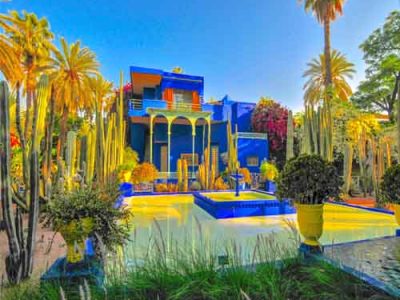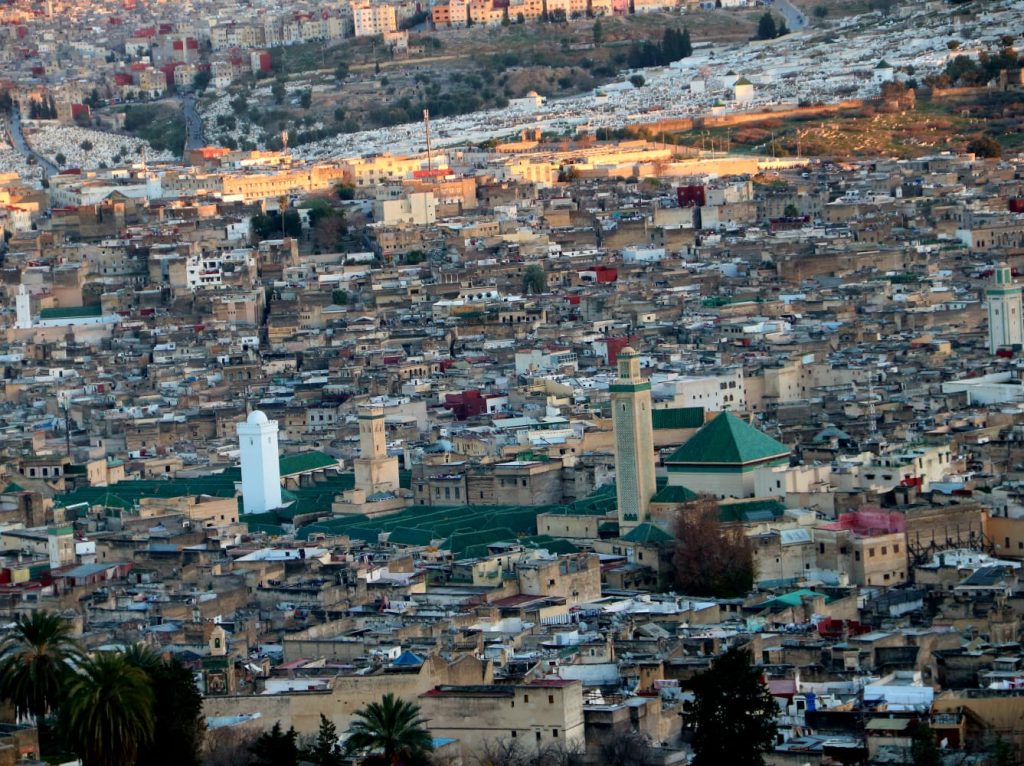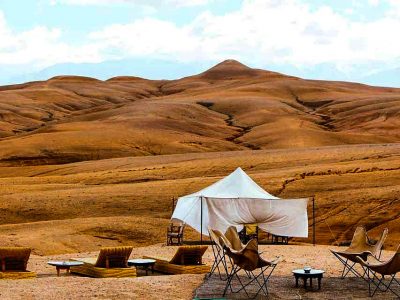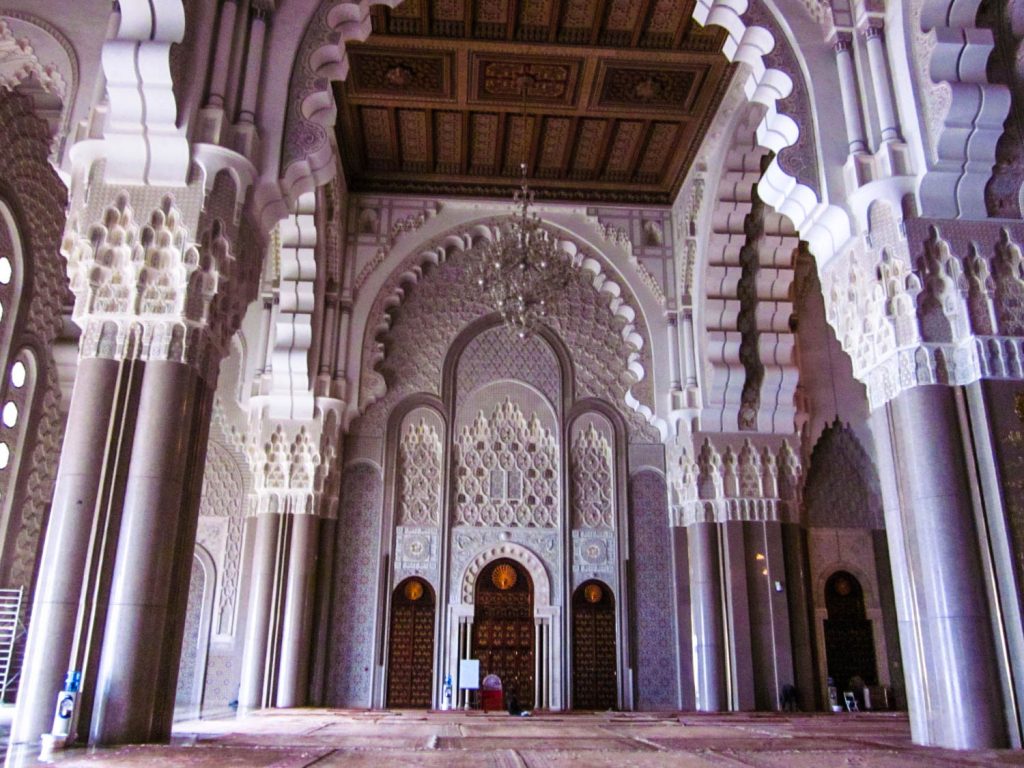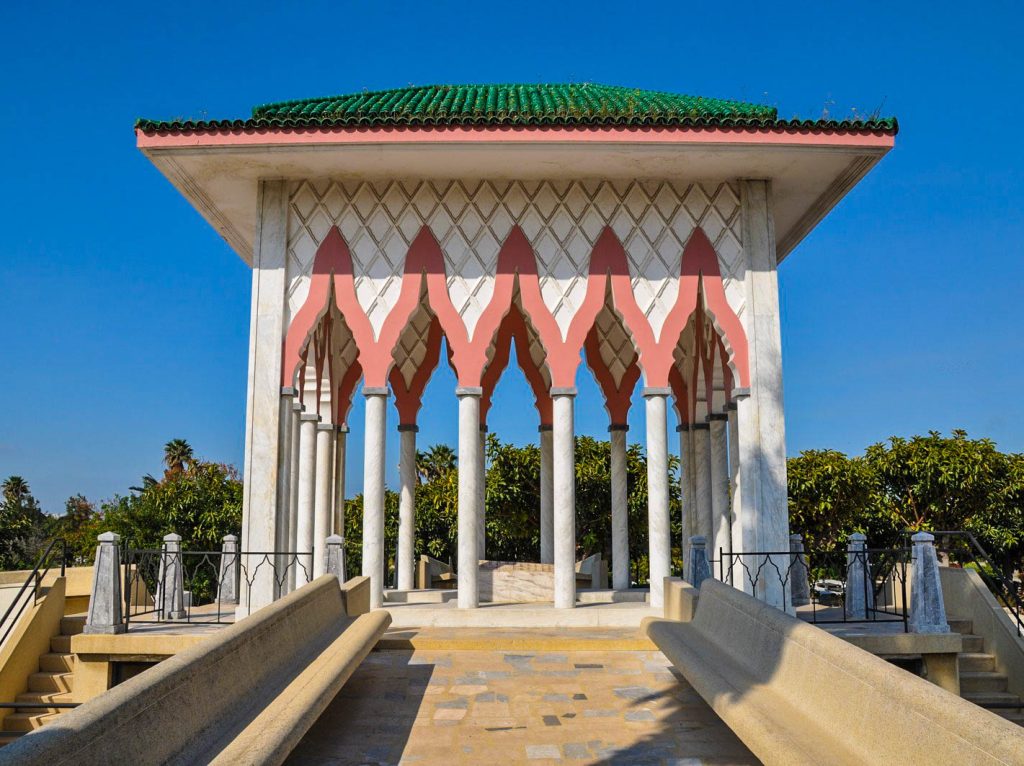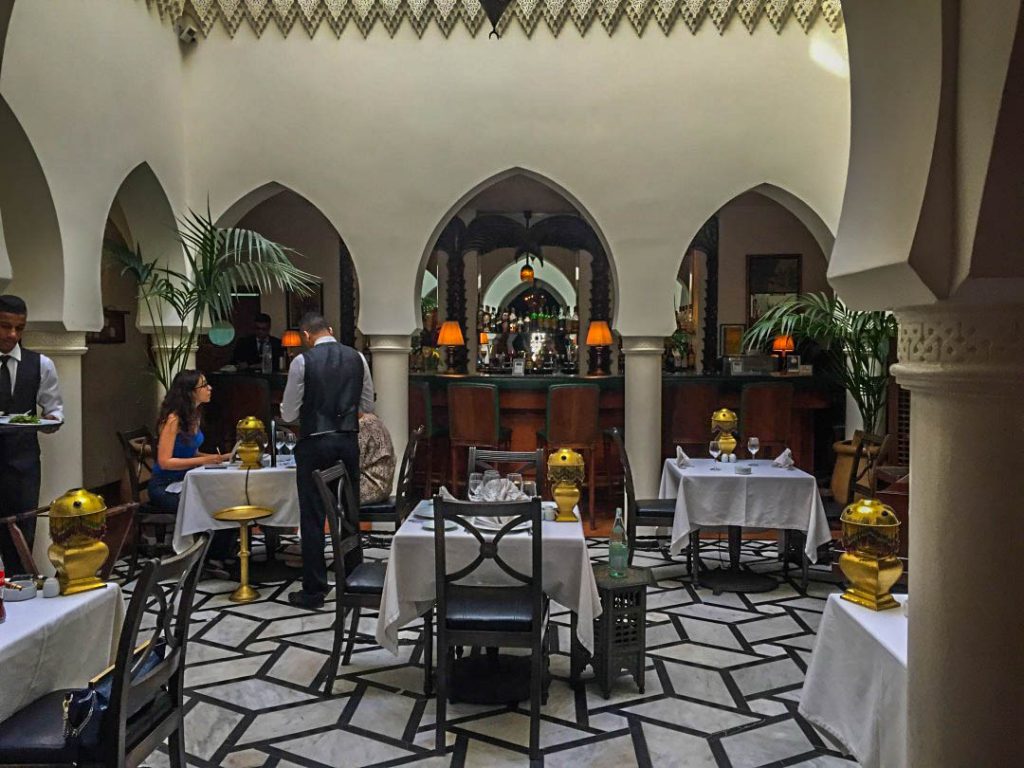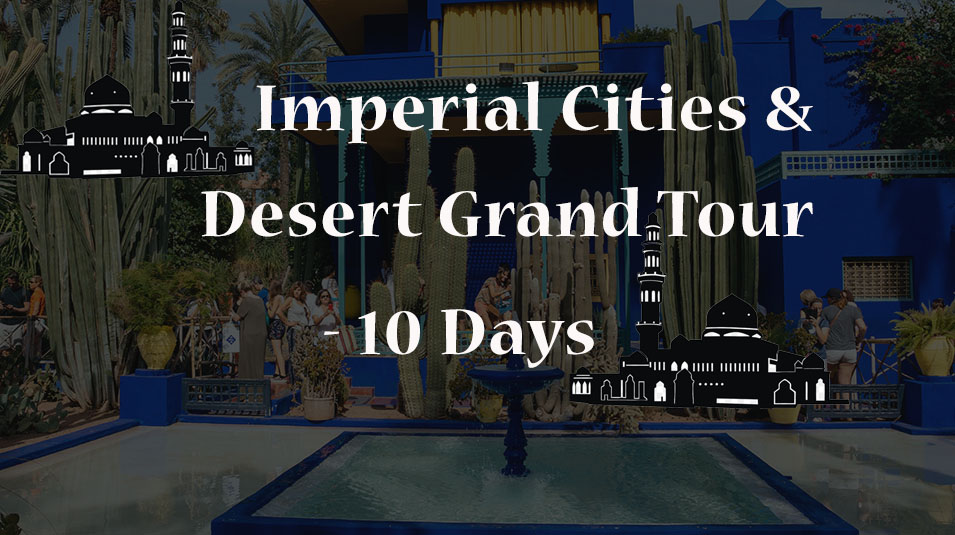
Imperial Cities & Desert 10-Day
Discover the best of Morocco with this Imperial Cities & Desert 10-Day loop, featuring the imperial cities of Rabat, Meknes, Fes, and Marrakech, as well as several days in the desert. You’ll navigate the streets of ancient medinas, ride a camel over shifting sands in the Sahara, explore mud-brick cities in desert towns, and cross the high rocky peaks of the Atlas mountains.
Highlights of Imperial Cities & Desert 10-Day
- Marvel at the intricate craftsmanship of Casablanca
- Roam the brilliant blue streets of Chefchaouen
- Compare all four imperial cities: Rabat, Meknes, Fes, and Marrakech
- Sleep under a veil of stars in an elegant Bedouin-style tent in the Sahara
Brief Itinerary
Day | Highlights | Overnight |
Day 1 | Arrive; Casablanca | Casablanca |
Day 2 | To Rabat and Chefchaouen | Chefchaouen |
Day 3 | Chefchaouen, Roman ruins of Volubilis; Meknes and Fes | Fes |
Day 4 | Fes: Exploring the Imperial City and medieval medina | Fes |
Day 5 | Over the Middle Atlas to the Desert: Erfoud, Merzouga, Sahara | Merzouga |
Day 6 | Desert towns around Merzouga, lush oases, and Todra Gorge | Todra Gorge |
Day 7 | Dades Valley, Ouarzazate, AïtBenhaddou | AïtBenhaddou |
Day 8 | AïtBenhaddou, Tizin’Tichka Pass over the High Atlas; Marrakech | Marrakech |
Day 9 | Marrakech: Exploring the Red City | Marrakech |
Day 10 | Marrakech to Casablanca; depart |
Detailed Itinerary Imperial Cities & Desert 10-Day
Day 1: Casablanca
Morocco’s west coast awaits! Casablanca awaits. Casablanca, Morocco’s biggest metropolis, is contemporary and French-influenced. See the beautiful Hassan II Mosque. The Hassan II Mosque can accommodate 25,000 indoors and 80,000 in its courtyard on an outcrop above the Atlantic Ocean. Hassan II is one of Morocco’s few non-Muslim-friendly mosques. See the marble, wood, and stone sculpture and gilded cedar ceilings. Visit Parc de la Ligue Arabe and the Casablanca Cathedral (now defunct) to see mid-19th-century Mauresque architecture (a mix of European art deco and Moorish style). Visit the Old Medina (old quarter) before touring the Hobous, or the new medina. Hobous, a 1930s French building, has olive, vegetable, and spice markets and more Mauresque architecture. Walk the “Miami of Morocco,” Boulevard de la Corniche.
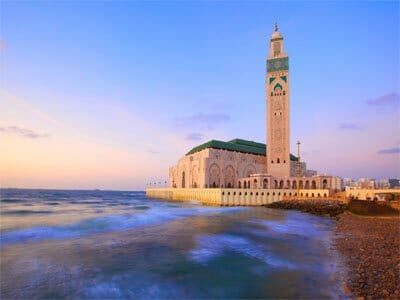
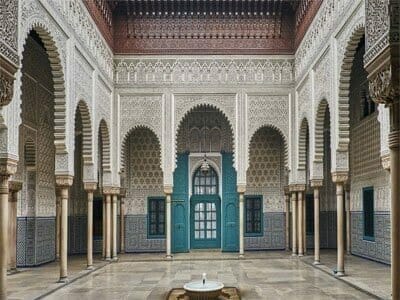
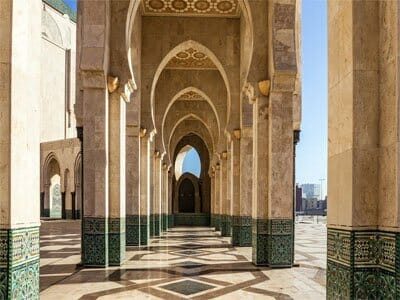
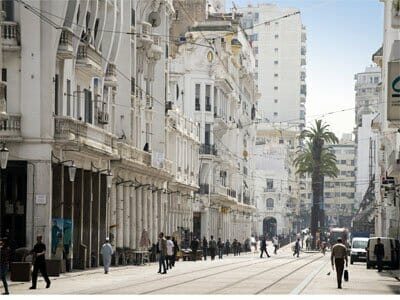
Day 2: To Rabat and Chefchaouen
Rabat, the imperial city and capital, lies north. See Rabat’s historic Chellah Necropolis and its Roman and Islamic remains. Locate the Kasbah Des Oudaias, a majestic entryway to Rabat’s old city center, and stroll the tranquil white and blue lanes. Before seeing the Hassan Tower, a minaret of the abandoned 12th-century mosque and Mausoleum of Mohamed V, visit the 20th-century Andalusian Gardens. Go north to see the Rif Mountains replace flat plains and undulating hills. Chefchaouen, the “Blue City,” with small, meandering alleyways and blue-washed buildings. Enjoy the easygoing environment and friendly residents. Before seeing the kasbah, visit the tight medina on the northern slope and eat at Plaza Outa el Hammam (old fortification). When the sun sets behind the mountains, visit the abandoned Spanish Mosque for one final vista of Chefchaouen.
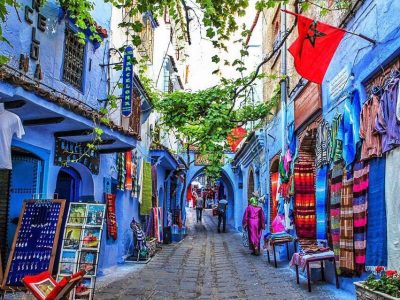
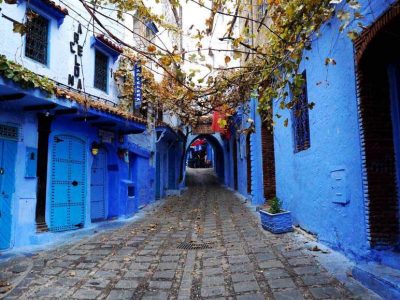
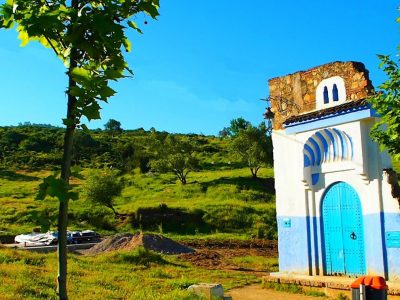
Day 3: Roman Ruins of Volubilis and imperial cities of Meknes and Fes
Before visiting Volubilis, take unrestricted photographs. Volubilis, Morocco’s best-preserved Roman remains, is UNESCO-protected. Explore the complex’s still-standing columns, large merchant homes, temples, and colorful mosaics, including the Labors of Hercules. South to Meknes, your second imperial city. Visit Ville Impériale and the medina. Visit the Moulay Ismail Mausoleum and Bab al-Mansour gate. East to Fes. Take a short hike up to the Merenid Tombs for a panoramic view of the medieval city before entering the medina. Visit the tombs at dusk. As the city lights come on, the muezzin’s worship calls fill the valley. Visit the Mellah (old Jewish quarter and cemetery) in Fes el Jdid for another view.
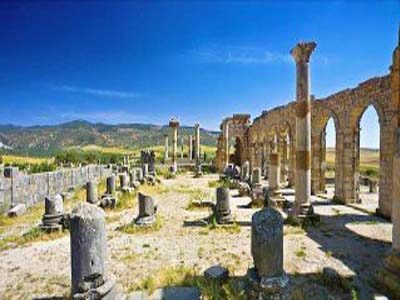
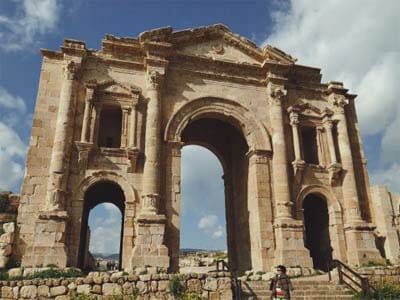
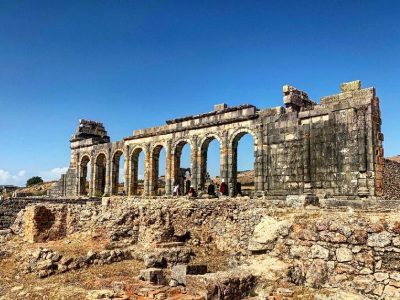
Day 4: Fes: Exploring the Imperial City and medieval Medina
Fes, the oldest imperial city in Morocco, has suffered minimal colonial expansion, contributing to its medieval attractiveness. Fes’s three major attractions are Fes el Bali (ancient Fes, the medina, where you’ll spend most of your time), Fes el Jdid (‘new’ Fes), and the French-influenced Ville Nouvelle. Meet your guide to learning about Fes’ history, culture, and medina. Start your tour in Fes el Bali at the Bab Boujeloud gate onto TalâaKebira. Passing Spanish and Tunisian-influenced architecture, browse the souks and shops. Chouara Tannery, like other old Medina tanneries, is unique. Climb the rooftop of a nearby leather shop to see the 11th-century stone pots filled with dye and men working. Guide you to Al-Qarawiyyin Library and Mosque (859 CE). If you’re lucky, you can peek inside the Library.
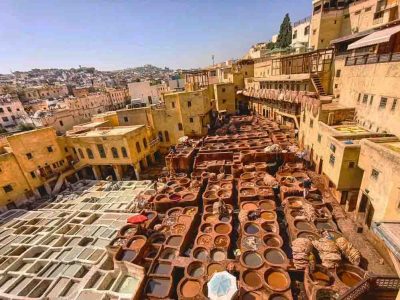
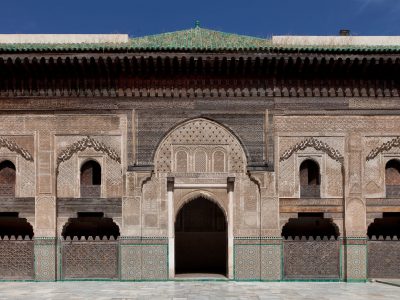
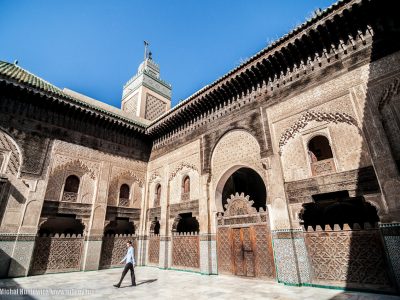
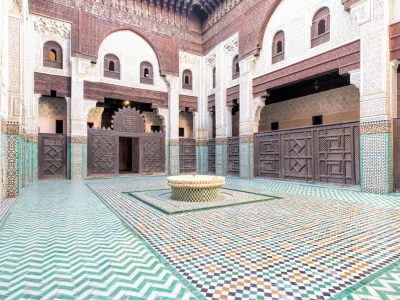
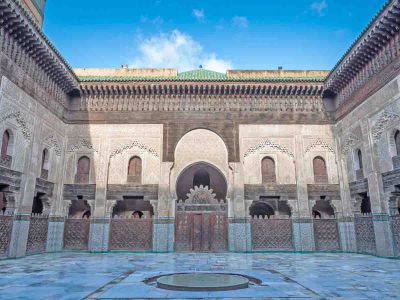
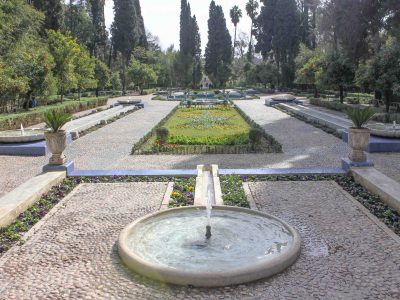
Day 5: Into the desert: Erfoud, Merzouga, and the Sahara
Early in the morning, depart towards the Middle Atlas Mountains, passing via Ifrane, Azrou, and Midelt en route. Continuing along the route that follows the magnificent Ziz Valley, see the transition from mountainous terrain to the stony desertscape of the Sahara. Overnight in Merzouga.
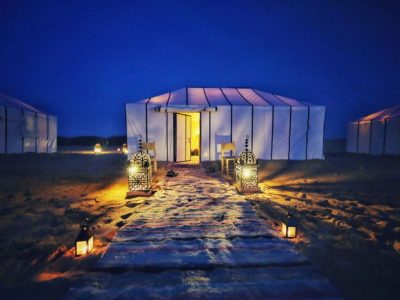
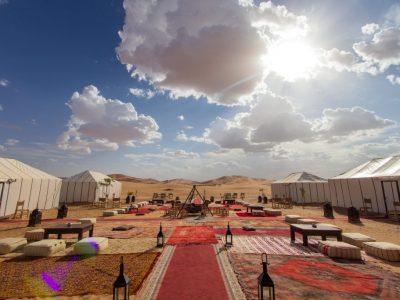
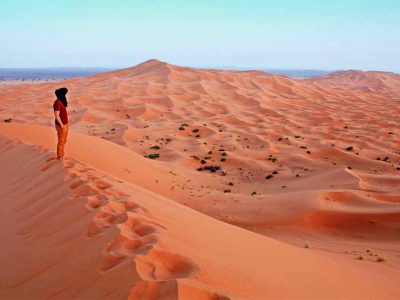
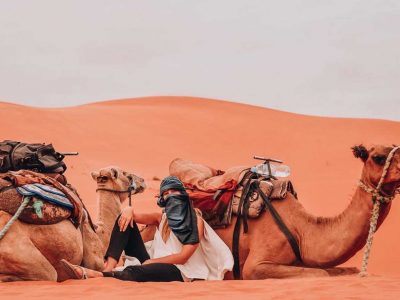
Day 6: Desert towns around Merzouga, lush oases, and Todra Gorge
Wake early to catch the rising sun before readying yourself to go sand boarding. You will also have the option of joining an ATV tour or the Erg Chebbi (sand dune) tour. Or, if you prefer lounging poolside in Merzouga, this can be arranged. Leave the dunes behind and discover the traditional Saharan village of Khemliya—its people originally from Mali. Experience traditional music, drumming and dancing before taking a light walk around the village and its farmed plots in the sand. From there, visit the market town of Rissani to explore the live animal auction and nearby ‘donkey parking lot’. Continue west to Tinerhir and admire the extensive stretch of oasis and the community of buildings that follow the greenery. Stop at the Todra Gorge and climb down to the water’s edge to relax in the refreshing water of the Todra River.
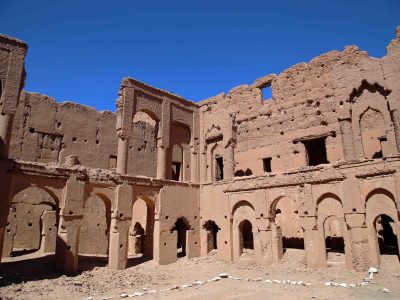
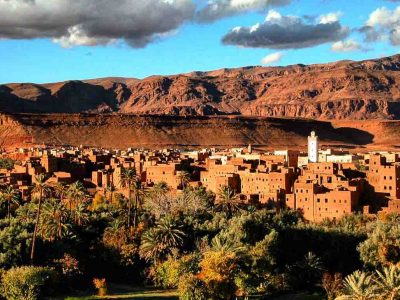
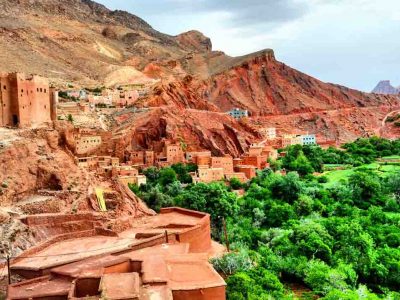
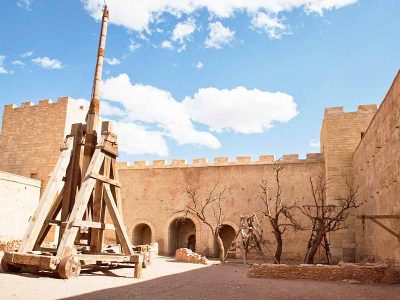
Day 7: Dades Valley, Ouarzazate, and Aït Benhaddou
The Valley of a Thousand Kasbahs, many of which are crumbling pisé clay structures, lie west (rammed earth). Via BoumalneDades, approach Kela’aM’gouna’s rose-lined plots. Roses provide rose water and rose oil for cosmetics. West to Ouarzazate, a desert shooting site. See which of your favorite movies were shot in the desert on a movie studio tour. Movie aficionados may enjoy the Musée du Cinema.
The Kasbah of Aït Benhaddou, a fortified pisé town in the Atlas Mountains’ foothills, is today’s last destination. AïtBenhaddou, Morocco’s most renowned kasbah, and a UNESCO monument, was a major stop on the trans-Saharan trade route between the southern desert and Marrakech and Ouarzazate. Climb the ancient Granary to see the Ouarzazate Valley and ksours (individual kasbahs). Explore the tight alleyways and tunnels and visit one or two historic kasbahs for a small price.
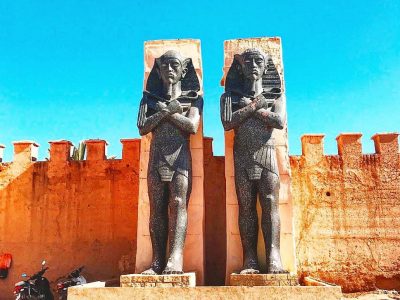
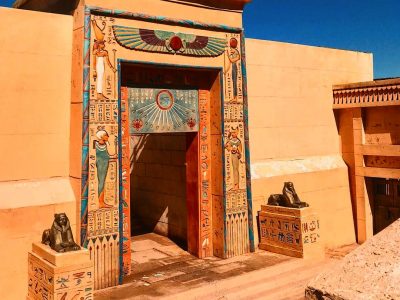
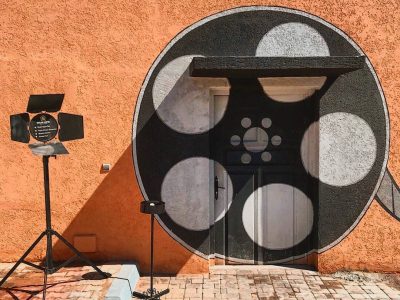
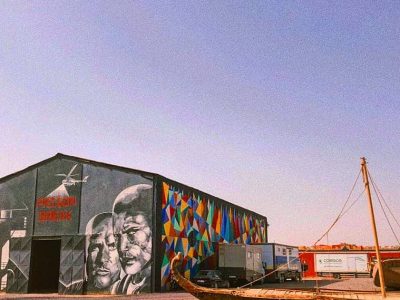
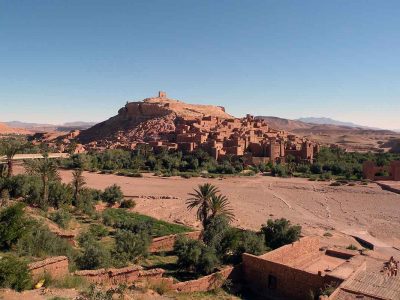
Day 8: Tizin’Tichka Pass over the High Atlas mountains to Marrakech
Go northwest across the Tizin’Tichka pass and the High Atlas mountains. Pause near the pass to see the tallest peak, 13,671-foot Mount Toubkal (4,167 m). Visit Taddert to tour an argan oil cooperative and learn how the nuts are processed to extract the precious oil used in health and beauty. As you descend the north side of the mountain range, the climate and scenery change from arid and barren to humid and green.
Before visiting Marrakech’s main square, Jemaa el-Fna, check into your hotel. Vendors, musicians, artists, and snake charmers fill the square in the evening! Wander the many stalls and orient yourself around the square: the souks are to the north, the Koutoubia Mosque and Gardens to the west, and the kasbah with the Saadian Tombs, Bahia Palace, and El Badi Palace to the south. Eat at a quieter café near the square and watch the show.
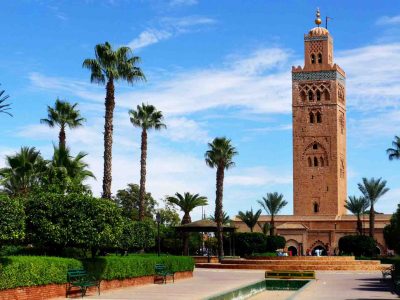
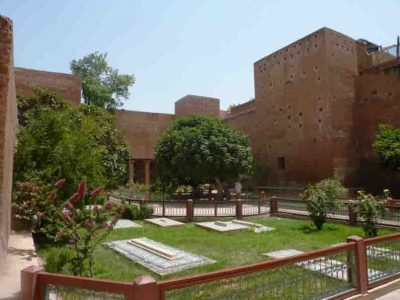

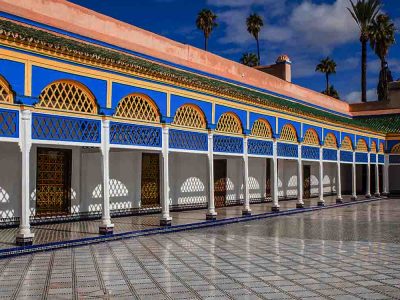
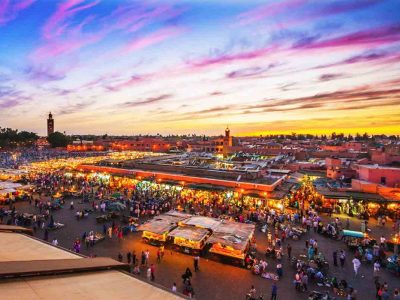
Day 9: Marrakech: Exploring the Red City
Marrakech, unlike Fes, is Berber rather than Arab and a key commercial hub. Its walls and buildings are naturally crimsons, earning it the nickname “Red City” from its 11th-century founding. Discover the medina’s souks and shops with your guide.
See Marrakech’s highest minaret, the 253-foot Koutoubia Mosque! Visit the 16th-century Ben Youssef Madrasa Islamic school to see Moroccan arabesques, calligraphy, and geometric tile work.
Escape the afternoon heat at Ville Nouvelle’s Majorelle Gardens. The 1930s-discovered Saadian Tombs are next. From there, visit the 19th-century Bahia Palace, the most luxurious of its time, and admire its intricate woodwork and painted ceilings.
Before visiting Marrakech’s Mellah, see El Badi Palace and its sunken gardens. As you return to Jemaa el-Fna, notice the large open spaces along the alleyways. These fondouks or caravanserai were once inns along ancient trade routes for travelers and traders.
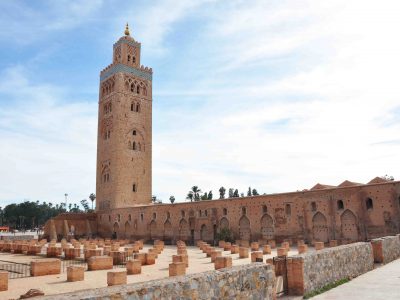
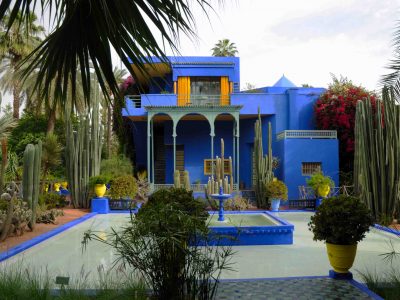
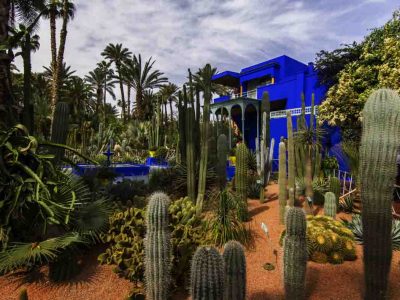
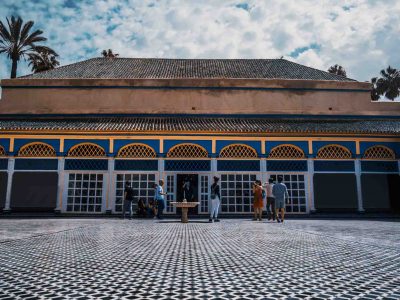
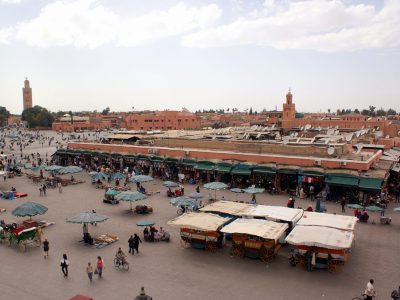
Day 10: Return to Casablanca
Rise early and complete any last minute gift and souvenir shopping before finding the 12th-century AlmoravidKoubba. The only surviving Almoravid monument, the Koubba was rediscovered in 1948. Next, visit the Marrakech Museum. Housed in the 19th-century Moorish Dar Mnebbi Palace, the museum offers a collection of modern and traditional art, including artifacts of Berber, Moroccan Jewish and Islamic cultures. If there’s time, you may wish to visit the Museum of Moroccan Arts (also referred to as the Dar Si Said Museum), known for its extensive woodwork collection.
After lunch, begin the return trip to Casablanca (about 3.5 hours). Stop for a quick drink at Rick’s Café—a popular restaurant and bar influenced by the movie Casablanca before catching your return flight to your next destination. your tour ends in Imperial Cities & Desert on 10-Day.
Casablanca Tours
What To Know About Casablanca
Address: 86 Lot Hiba, 30000, Morocco
Phone: +212 613-504732
Email: moroccoclassictours@gmail.com
SITEMAP


